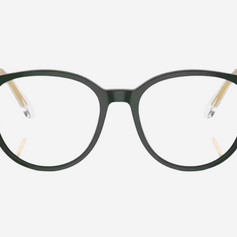The eye is commonly referred to across the globe, but it is not really a complete sphere. It is composed of two spheres with different radii, one set into the other.
The front, or anterior, sphere, is the smaller and more curved one. It is called the cornea. The cornea is the window of the eye because it is a completely transparent structure.
The posterior or back sphere is a white opaque fibrous shell called the sclera. The cornea and the sclera are relatively non distensible structures that wrap the eye and form a protective covering for all the delicate structures inside the eye. The cornea and sclera set into each other as a watch glass sets into the frame of a watch.
In terms of size, the eye measures approximately 24 mm in all its main diameters in the normal adult.
Anatomy of an Eye
The eye is covered externally by the eyelids, which are movable folds and protects the eye from any injury and excessive light. The lids also help to cover the eye and spread a film of tears over the cornea, which will prevent evaporation from the surface of the eye. The upper eyelid extends to the eyebrow, which separates it from the forehead, and the lower eyelid usually passes without any line of demarcation into the skin of the cheek.
Eyelids are about 2 mm thick and have an anterior and a posterior border. From the anterior, or front, border rise the eyelashes, which are hairs arranged in two or three rows. The upper eyelid lashes are longer and more numerous than the lower ones and they tend to curl upward. The lashes are longest and most curled in childhood.
The portions of the eye that are normally visible are the cornea and sclera. We can see the iris and pupil, which is situated in the back of the cornea, because the cornea is transparent. The sclera forms the white of the eye and is covered by a mucous membrane called the conjunctiva.
The portions of the eye that are normally visible in the palpebral fissures are the cornea and sclera. Because the cornea is transparent, what is seen on the cornea is the underlying iris and the black opening in the center of the iris, called the pupil. The sclera forms the white of the eye and is covered by a mucous membrane called the conjunctiva.
The cornea is a clear, transparent structure with a brilliant, shiny surface. It has a convex surface that acts as a powerful lens. Most of the refraction (prescription) of the eye takes place not through the crystalline lens of the eye but through the cornea.
The sclera consists of the white portion of the eye. The sclera is thin in children, and therefore it appears bluish because the underlying pigmented structures are visible through it. It may become yellow as you age because of the deposition of fats.
The lens of the eye is a transparent biconvex structure. The lens is surrounded by a capsule, which is highly elastic and transparent. Lens material within this elastic bag is very soft in infants and it tends to grow harder especially towards the center of the lens.
Retina is actually a part of the brain that contains all the sensory receptors for the transmission of light. There are 2 main retinal receptors, rods and cones. Rods function best in dim light and cones function best in the daylight.
The optic nerve is located at the back of the globe and transmits visual impulses from the retina to the brain itself. The optic nerve has no sensory receptors itself and therefore its position corresponds to the normal blind spot of the eye.
Ref: The Ophthalmic Assistant, Harold A. Stein; Raymond M. Stein; Melvin I. Freeman














